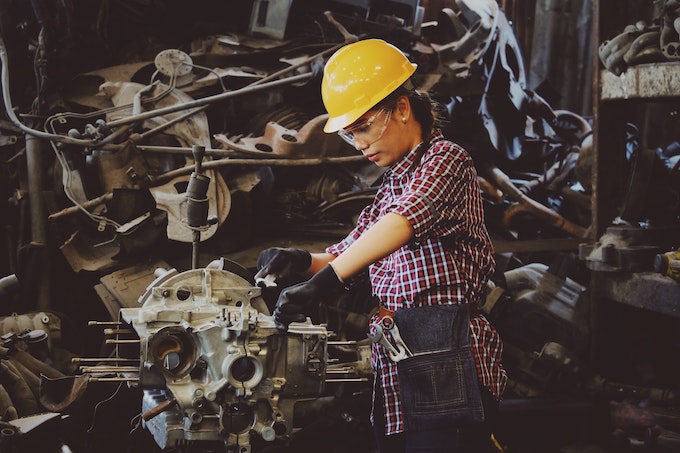
Common Workplace Injuries For Tradies
As tradies are three times more likely to be injured on the job than other types of workers, workplace injuries remain a concern for employers, employees, and contract workers alike. While anybody can potentially get injured at work, certain roles in particular industries— such as tradies on construction sites— are more likely to experience a workplace injury and file a claim.
Despite workplace injuries still occurring, there are ways to reduce their likelihood and improve potential outcomes. One way to do this is by seeing an allied health professional like an osteopath, physiotherapist, or chiropractor, and working together in an effort to reduce pain and decrease the risk of further injury.
This blog explores what the most common workplace injuries are for tradies, and how an allied health professional such as an osteo, chiro, or physio may be able to help. To make an appointment for one of these services or another allied health service such as podiatry or sports physiotherapy, contact our team at Northern Spinal today.
Which Workplaces Are Most At Risk For Workplace Injuries?
Labourers made up the highest percentage of Australian workers to file a serious claim relating to a workplace injury in 2019- 2020, where they represented 24% of the claims lodged. This was followed by community and personal service workers at 19%, technicians and trades workers also at 19%, and machinery operators and drivers at 14%.
Why Are Tradies At Higher Risk For Workplace Injuries?
Tradies such as carpenters, plumbers, and electricians are the most likely to be seriously injured on a job site, and many injuries are the result of body stressing.
Body stressing can refer to muscle stress caused by carrying, lifting, or pulling an object, or another activity that places stress on the muscle. As tradies tend to carry out these tasks most often, they are more at risk of workplace injuries such as body stressing.
Other types of serious injuries that may affect tradies are:
- Falls, trips, or slips from the same level or a different height
- Being hit by a moving object
- Being hit by a falling object
- Hitting either moving or stationary objects with their body
This list is not exhaustive, as other mechanisms can also cause workplace injuries.
The Most Common Work Injuries For Tradies
As body stressing— stress placed on muscles— is the most common type of workplace injury for tradies, many of the injuries tradies acquire on the job are musculoskeletal in nature. Joint and ligament injuries are also common.
Musculoskeletal injuries such as slipped discs and lumbar sprains make up 15% of workplace injuries for tradies. Other injuries can include:
1. Shoulder dislocation
A shoulder dislocation is when the head of the shoulder joint gets forcibly separated from the scapula. As the shoulder is the most mobile joint in the body, it is more susceptible to dislocation than other joints. Tradies are prone to shoulder dislocation through trips and falls, whether it is from a height or on the same level.
2. Cartilage injuries
Cartilage injuries typically occur in the knee cartilage, though the cartilage in the hips, ankles, and elbows can also be affected. The knee joint contains two types of cartilage, and they help with shock absorption and joint stability. As a result, injuring your knee cartilage through forceful wrenching or a direct impact can cause instability, weakness, and knee pain.
3. Ankle sprain
Ankle sprains are a common injury among many types of people, including tradies. You can sprain your ankle by making a sudden movement or twist, where the ligaments are forced beyond their usual range of motion. The treatment for an ankle sprain depends on the grade of the injury, which ranges from 1 (mild) to 3 (severe).
4. Low back pain, or acute non-specific low back pain (LBP)
Low back pain can be due to an issue with a disc, ligament, or muscle. Most low back pain is non-specific, meaning the cause of the pain may not be identifiable. Workplace injuries to the low back tend to be acute, as this means it wasn’t triggered by an underlying condition.
5. Muscle tears
Muscles such as the quadriceps, calf, and hamstring account for many muscle tears in the construction industry. The quadriceps are located on the front of your thigh and are usually injured when slowing down, while calf tears occur most frequently when pushing off from working and hamstring tears are usually acquired by overstretching.
Hey Tradies: Do You Have A Workplace Injury?
Many tradies put up with aches and pains as part of the job, but it doesn’t need to be that way. While acknowledging and working on an injury with an allied health professional may help it feel better in the short term, it’s also a good long-term strategy as it can decrease the chance of small injuries becoming bigger.
An allied health professional such as a chiropractor or physiotherapist may help to reduce pain now and in the future, due to their thorough understanding of the body, how it moves, and possible treatment options. To book an appointment with one of our knowledgeable allied health practitioners, contact us at Northern Spinal today.



